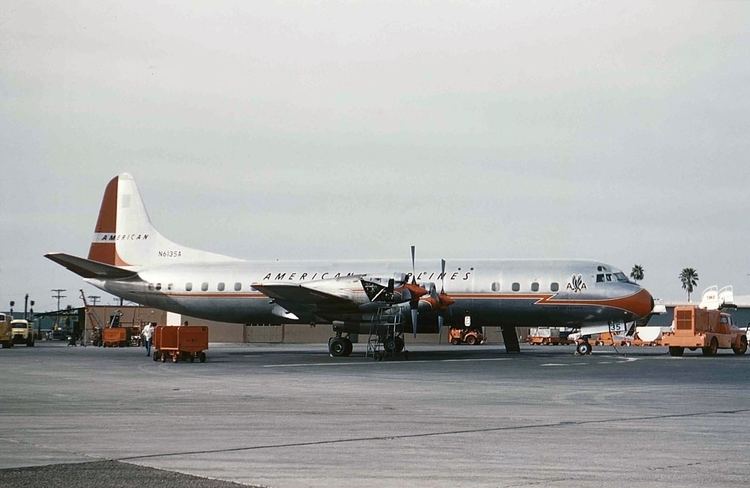Date February 3, 1959 Crew 5 | Passengers 68 Fatalities 65 | |
 | ||
Site New York City, New York | ||
American Airlines Flight 320, registration N6101A, was a Lockheed L-188A Electra en route from Chicago Midway International Airport to New York City's LaGuardia Airport on February 3, 1959. It crashed into the East River on approach; 65 of the 73 on board died. It was the first crash for the Electra, which had been introduced only recently by American Airlines. It would not be the last, however, as a series of fatal accidents over the next year would cause the aircraft to have a loss of confidence by the flying public, including two mysterious in-flight wing failures which resulted in speed restrictions and a near grounding by the FAA.
The Civil Aeronautics Board (the predecessor of the NTSB) was the government agency charged with investigating airliner accidents, during that era. The CAB PROBABLE CAUSE statement:
Many references to Flight 320 claim that there were 72 persons on board and that there were only seven survivors. This error may be because one victim was a lap infant and did not have its own seat or ticket.
Robert Emerson was one of the victims of the crash. Dr. Emerson was a noted botanist, who discovered that plants have two distinct photosynthetic reaction centres.
Herbert Greenwald was one of the victims of the crash. Mr. Greenwald was a Chicago real estate developer who developed several landmark buildings using Mies Van Der Rohe as the architect.
The flight number is still used today on its Montego Bay-Miami-Dallas/Fort Worth route.
The accident took place on the same day that a plane carrying Buddy Holly, the Big Bopper, and Ritchie Valens crashed near Clear Lake, Iowa, killing all three singers. (See "The Day the Music Died.")
